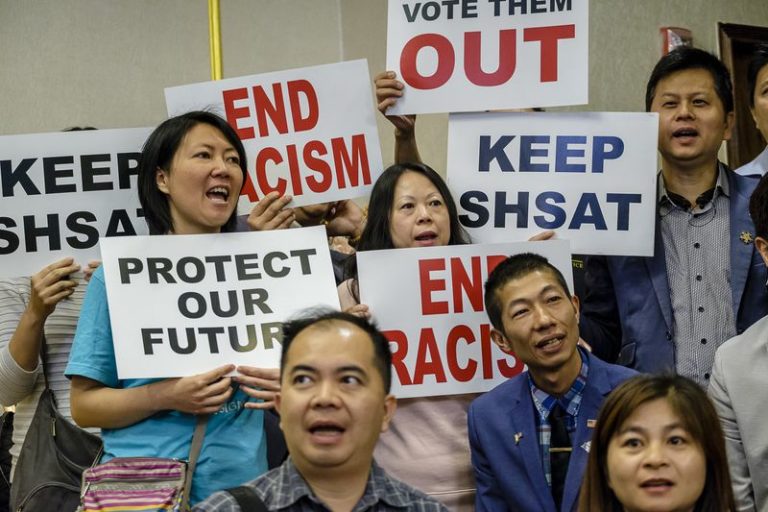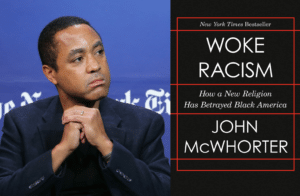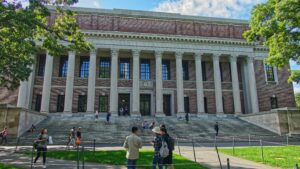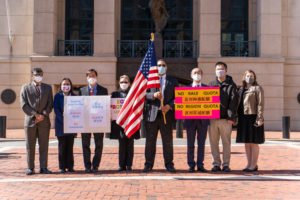Harvard’s inconsistent position on discrimination ignores the full meaning of equality before the law

Later this month, Harvard University will file its brief asking the Supreme Court to refrain from reviewing its admissions policy. Its full-throated defense of the policy, which discriminates against “Asian-American” students, reveals the university’s inconsistent position on discrimination. On one hand, Harvard condemns discrimination against Asian-Americans. On the other, the university condones discrimination in its own admissions policy.
Let’s start with the good part. In the wake of the disturbing uptick of violent attacks on Asian-Americans in the U.S., The Harvard Gazette published an article condemning racism and detailing the country’s history of discrimination toward Asian immigrants. The piece chronicles government discrimination throughout history and quotes Harvard President Larry Bacow, who said:
“Harvard must stand as a bulwark against hatred and bigotry. We welcome and embrace individuals from every background because it makes us a better community, a stronger community. An attack on any group of us is an attack on all of us—and on everything we represent as an institution.”
Yet these words are hollow when we take a closer look at Harvard’s discriminatory admissions policies.
The renowned Ivy League school has a shady history when it comes to the treatment of prospective Asian-American students, openly discriminating against them in order to achieve its desired racial balance.
Harvard purports to be acting in the name of social justice, but any time one ethnic group is favored over another, the Fourteenth Amendment’s promise of equal protection for all has been violated. And that is exactly what has been happening at Harvard.
Harvard is a private school. But because it accepts a massive amount of federal funding, it is bound by Title VI of the Civil Rights Act. Title VI holds Harvard to the same standard as public schools are held under the Equal Protection Clause. In other words, Harvard must afford every individual equal treatment under the law.
That principle forbids government entities—federal and local—from using arbitrary racial classifications to discriminate against individuals. Here, the term Asian-Americans is just as arbitrary as other racial classifications. It includes people with ancestors from dozens of countries, and “Asians” make up over half of the world’s population.
The belief that “all men are equal” is so integral to America’s identity, it was included in the beginning of our country’s founding document. This is why Pacific Legal Foundation fights to protect the right of all individuals to be treated equally before the law.
Harvard has, however, tried to ignore this protection by instituting admissions policies that are designed to limit the number of Asian-American students at the school.
In 2014, Students for Fair Admissions (SFFA) struck back, filing a civil right lawsuit against the school.
The group alleges that Harvard discriminates against Asian-American applicants, in part through “personality ratings” that stereotype those applicants as dull, less likeable, and less kind. But for the school’s consideration of race, Asian-American enrollment at Harvard would increase by 11%. Harvard’s discriminatory policy has had pernicious effects. College admissions guidebooks have instructed Asian-American applicants not to say that they want to be doctors or major in science, for fear of being stereotyped. Unfortunately, a federal district court held that Harvard’s admissions process was legal.
In February 2021, SFFA petitioned the Supreme Court to take their case.
PLF filed an amicus brief, continuing our fight to uphold equal treatment under the law. We believe that admissions decisions should be grounded in objective and transparent factors that measure achievement, rather than on the basis of race.
While we await the fate of the case, Harvard is continuing to apply different standards for what it considers “discrimination.” It continues to condemn racial discrimination but discriminates against students in its admissions policies at the same time.
If Harvard’s administration took the principle of equal treatment to heart, maybe they would be just as vociferous in condemning discrimination within their walls as they are in criticizing discrimination elsewhere.












